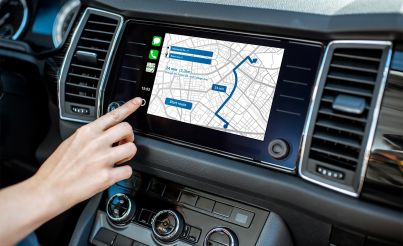Modern cars are no longer just a means of transport – they’ve become intelligent, connected companions that support drivers in a variety of situations. In addition to classic safety features like seat belts, airbags, or crumple zones, today’s cars are equipped with numerous assistance systems that make driving not only safer, but also more comfortable. With advancing technology, these systems continue to evolve and form the basis for the autonomous cars of the future.
Safety Systems: Lifesavers on the Road
Modern cars come with a range of safety systems designed to prevent accidents or reduce their severity. On the one hand, these include classic features such as airbags and seat belts that can be life-saving in critical moments. On the other hand, they are enhanced by technologies like:
Anti-lock braking system (ABS): Prevents the wheels from locking during braking.
Electronic stability control (ESC): Increases driving stability.
Automatic emergency braking: Detects potential collisions and initiates braking automatically.
Traction control system (TCS): Prevents the wheels from spinning during acceleration.
Brake assist: Automatically increases brake pressure during emergency braking.
Drowsiness detection: Recognizes signs of fatigue and recommends a break.
Emergency call system (eCall): Automatically alerts emergency services after an accident.
These systems intervene in critical moments and can save lives in emergencies.
Driver Assistance Systems: More Control, More Comfort
Driver assistance systems go beyond safety – they actively support the driver, especially on long drives or in complex traffic situations. These systems rely on electronic technologies and represent early steps toward autonomous driving:
Adaptive cruise control (ACC): Maintains a set speed and safe distance to the car in front.
Lane keeping assist: Warns or intervenes when unintentionally leaving the lane.
Blind spot monitor: Detects vehicles in the blind spot and warns when changing lanes.
Traffic sign recognition: Displays relevant signs on the dashboard.
High beam assist & adaptive cruise control: Enhance long-distance comfort.
Head-up displays & acoustic alerts: Provide clear information without distracting the driver.
Some systems only activate when needed; others automate specific driving maneuvers – making driving both safer and more relaxed.
Parking Assist: Easier In and Out
Modern cars also offer smart parking support:
Parking sensors: Provide visual and acoustic warnings about nearby objects.
Rearview camera: Displays the area behind the car.
Automatic parking assist: Handles steering during parking – you only control brake and throttle.
These systems are especially helpful in tight spots or unfamiliar surroundings.
Tech Developments & Legal Requirements
To reduce road fatalities and serious injuries, certain assistance systems have become mandatory for manufacturers. Due to a new EU regulation (effective from July 7, 2024), the following systems must be included in all new cars:
Intelligent speed assistance (ISA)
Drowsiness detection
Automatic emergency braking
Lane keeping assist
Rear parking assist
Adaptive cruise control
Black box recorder
Standardized interface for alcohol-sensitive immobilizers
The Future: Connectivity & Artificial Intelligence
With rapid advances in car technology, assistance systems are becoming increasingly sophisticated. In addition to well-known systems like lane keeping and adaptive cruise control, newer technologies include:
V2X (Vehicle-to-Everything): Cars communicate with other cars (V2V) or infrastructure (V2I) to detect hazards early or optimize traffic flow.
Artificial intelligence (AI): Helps interpret complex traffic situations and is key to future autonomous driving.
The Risks: Assistance Systems Are Not Autopilots
Despite their many benefits, drivers should never rely completely on these systems. Malfunctions, incorrect readings, or distractions from alerts can be dangerous. Assistance systems are meant to support – not replace – the driver’s attention.
Safe Driving with Carvolution
Looking for a car that comes with modern safety and assistance systems? Carvolution offers a wide selection – from compact city cars to SUVs and electric cars. With our all-in-one car subscription, you can enjoy carefree and comfortable driving – safely.
Not sure which system or car is right for you? No worries – the Carvolution team is happy to give you personal, no-obligation advice. Simply book a consultation – we’re looking forward to helping you!
Electric Sale
Discover a variety of electric cars at great prices and get 3'000 km for free – only for a limited time.










